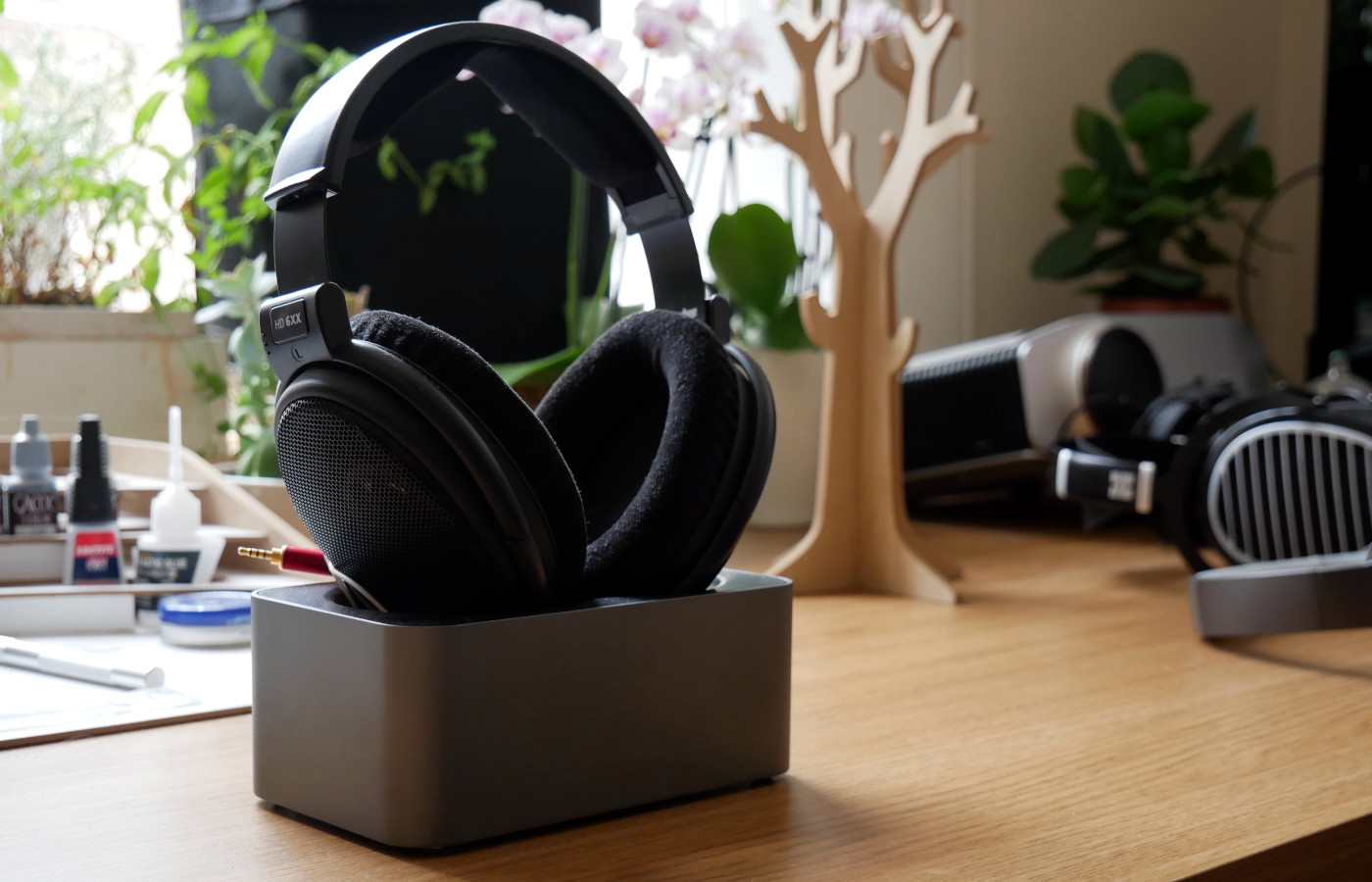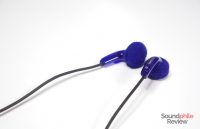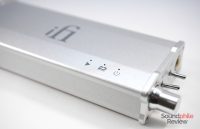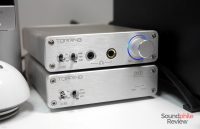The pandemic has brought us many bad things, but there’s also light in this darkness. Many companies were started during this period and Neederland is among them. Founded by three friends, Neederland’s first product is the iconic (and aptly named) TrueStand, a premium stand that offers a convenient and great-looking way to store your headphones. Possibly more than the product in itself, what is interesting is how it came to be, who are the people behind it, and what are their ideas. So I took the opportunity to ask Marcin Słomkowski, one of the founders of Neederland, a few questions.
Unfortunately, one of the limits that the pandemic has taught us to live with is the impossibility to travel but for the most essential matters. This means that I haven’t had the privilege of meeting Marcin and his team in person in Cambridgeshire and we had to rely on electronic means to communicate.
Riccardo: Hello Marcin! You are one of the co-founders of Neederland. Can you tell us more about you and your company?
Marcin: Hello Riccardo. First of all – thank you for the invitation to the interview. Neederland is a UK based company and we think of it as a startup – we want to grow it quickly and deliver a range of products for a broad audience. We are happy to begin our journey with the audio world, as we are also audio enthusiasts. The name of the company comes from the words “Needer” + “land” [though I’m quite sure there’s a play on “Netherlands” in there… ed]. We believe we can fill niches by bringing needed products.
Neederland was founded last year during pandemic times by 3 friends: me, Michał and Norbert, who got to know each other at the University. We studied mechanical engineering and material science, but our paths after graduation differed a lot. I find it really valuable that we have the same background, but different experience. Let me briefly introduce us:
Norbert is a PhD student in Cambridge in Engineering. Currently, his activities focus on manufacturing processes, data analysis and neural networks. We believe that these skills will be useful in creating smart audio products in our future portfolio. Norbert is also our PR guru and the imaginative mind of the company!
Michał is an experienced material engineer. His passion for modern engineering materials, such as carbon fibre and 3d printing, helped us during the prototyping stage. Michał has also a very engineering-oriented mind, which helped us to solve all the engineering-related problems during the design and production stage.
Last, but not least, me, Marcin. I am broadly experienced in different fields, such as design, 3D modelling, finances and engineering. It helped us to have an overall view of different aspects of the company. I also brought our ideas into 3D models and made the changes needed to the early prototypes. My experience in the banking industry helps us better understand the business and financial side of Neederland.
Riccardo: Neederland’s first product is the TrueStand, a headphone stand like no other. Why did you choose to use this design and what are its main advantages compared to traditional ones where you hang your headphones?
Marcin: We wanted to introduce something brand new to the audiophiles world. We thought of different headphone stands as generic and did not want to reproduce that. Furthermore, we also wanted to please the audiophiles, so we decided to kill two birds with one stone and go for a premium product with a design that solves the headbands distortions problem, common in other headphone stands. We thought of different solutions, such as double cone foam shape. Finally, it evolved to its extraordinary shape which supports lots of different headphones.
The main advantage, as I mentioned, is no headbands distortions. Our stand is much neater and not as bulky as other headphone stands. It can easily fit any kind of desk setups, even when the space on the desk is a limitation. Moreover, it is easy to use, stable and sturdy – it cannot be bent and damaged easily as other headphone stands. The last, but not the least advantage is the support for the low power mode when using Airpods Max.
Riccardo: The TrueStand project came to life thanks to a crowdfunding campaign. Do you think that crowdfunding is a game-changer when it comes to projects like yours? Is it going to be the breeding ground for more innovative projects in the audio space as well as it already is in other ones like tech?
Marcin: Actually, we began with a crowdfunding campaign, but we finally decided to cancel it. We wanted to adjust our product and add the Airpods Max compatibility feature. We decided that we did not want to waste time on another campaign, as it takes lots of time for preparation, marketing and the campaign itself.
Crowdfunding is a hard playground, but it can offer a lot when some conditions are met. First of all, the marketing should be targeted generally only to the crowdfunding enthusiasts. The effort put into marketing omits a broad audience of people, who are not familiar with the crowdfunding concept. However, the campaign allowed us to check that our product is needed on the market. We received numerous questions about the retail date from customers and companies. That’s why we loved the idea of the crowdfunding and we want to use it for our next, more complicated products. The biggest advantage of it is that it can help startups with financing big, really costly production and design processes. We think that crowdfunding is the best for gadgets with high initial cost, but not so suitable for premium ones. Worth adding is also the fact that crowdfunding allows bringing crazy ideas into life, that’s why we think it can be a game-changer for more innovative projects in the audio space.
Riccardo: One of the things that were added to the project is the compatibility with the Apple AirPods Max. Do you see the future of audio as being more like those headphones rather than the classic audiophile ones?
Marcin: We believe that everything is moving towards IoT and a “smart” world. It started not so long ago with development boards such as Sony Spresense, which include Hi-Res audio output, high processing power and a lot of sensors such as GPS, gyroscope, accelerometer and so on. We can observe technologies, like in AirPods Max, which will deliver surround sound via headphones. This is possible through the advanced sensor which allows head detection and head tracking. Further, patents revealing biometric sensors, such as heart rate monitoring ones, will be used in upcoming products. Also, it is worth noting that current products can register sound levels, so we know if we are listening to music at a safe level. We hope that the future of audiophile equipment will be driven not only by sound but also by vision – combining the best technologies in one product, like VR glasses.
Note: This is something I have actually never thought about: I have always felt that hearing and vision are quite different and separated. If anything, I’ve always felt that vision distracts from sound. But there is a point to be made here: with the right content, sound can actually be enhanced by vision and become something more – and vice-versa. So this is something I am now really curious of trying out!
Riccardo: Now a more personal question. In your opinion, what is the technology that is going to have the largest impact on our lives in the foreseeable future?
Marcin: As technology boomed in the XXI century people want something different. People tend to live in a rapidly changing environment and want the technology to slow it down a bit. The key ingredients for technology with great impact: smart and automatic.
AI, frameworks such as TensorFlow and dedicated platforms to build smart devices. As we can already observe, AI tools can be easily used to classify X-Ray images, ECG signals and to predict our health. Neural networks are deployed in manufacturing, autonomous cars, finances and even dating apps. We hope to see more audiophile products that use real technological advancements rather than being just snake oil – and smart sensors combined with advanced algorithms should allow the introduction of such products in the future.
I hope that too! Though I also think that the future holds a division in the audiophile world between “purists” and “modernists” – something the embryo of which you can actually already see, but it’s going to get more evident in the future in my opinion.
I find Neederland’s practical approach laudable and it’s no wonder that it has resulted in a great product like the TrueStand. We’ll see what the company has in store for the future!








